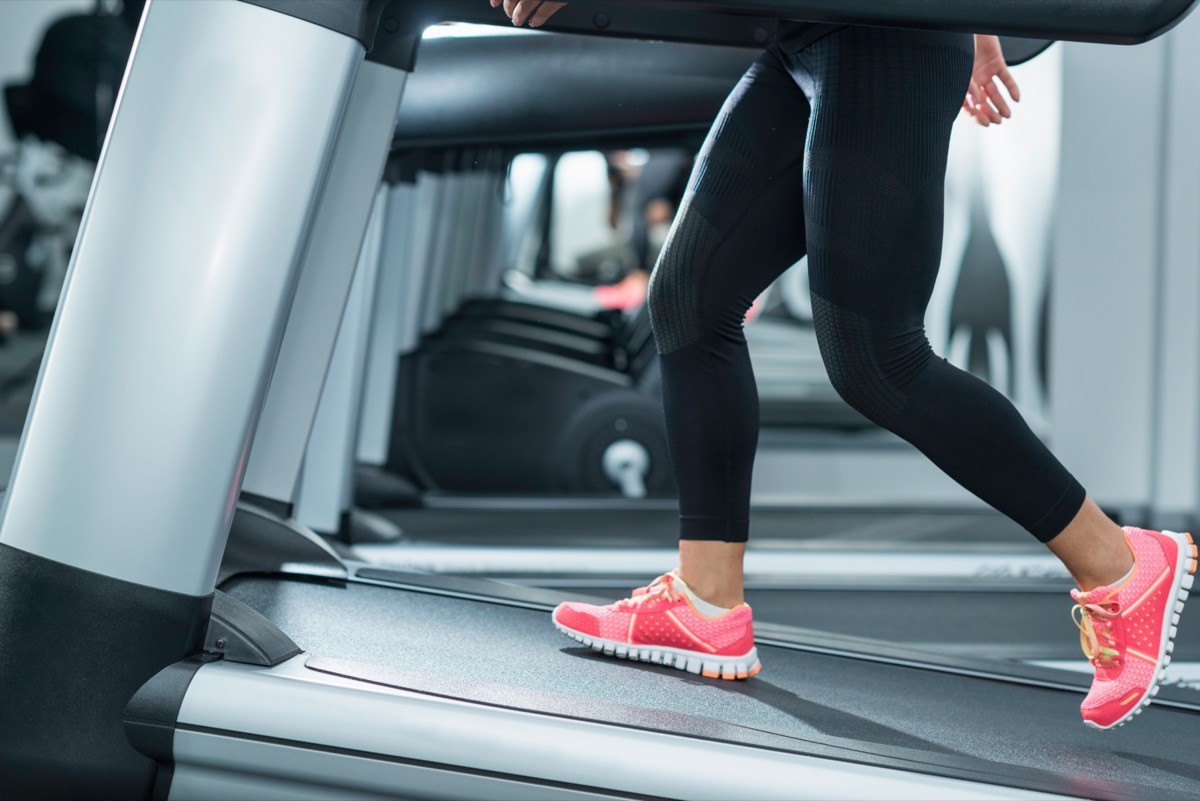5 Short Walking Workouts for Weight Loss

Finding time to exercise is just one of many things on our everyday to-do lists. But when other action items take precedence, it can be easy for workouts to take a backseat—especially when we feel like we don’t have enough time to make it worth it. However, doctors and certified personal trainers say that you don’t need all that much time to meet your weight-loss and fitness goals, as certain short walking workouts can be highly effective.
“Getting regular walks in can help speed up your metabolism and work different muscle groups, especially if you hit some hills. Even short walks can really add up, making it easier to stay consistent,” Josh York, CPT, founder and CEO of GYMGUYZ, tells Best Life. “A quick stroll can clear your mind, reduce stress, and help you feel more productive. Instead of making excuses about not having time, just start walking! Any movement is good movement.”
Looking for a quick-hit option that will also move you closer to your goals? Read on for five of the best short walking workouts for weight loss.
RELATED: Why Walking Only 3,867 Steps a Day Is All You Need, Science Says.
1
15-minute incline walk

To maximize weight-loss results while walking, experts recommend introducing an incline.
“[Incline walking] is great if you have a hill or any inclined area near your home or work,” Thomas Pontinen, MD, LCP-C, cofounder and physician at Midwest Anesthesia and Pain Specialists, tells Best Life. “Alternatively, you can use a treadmill set to an incline if you have access to one.”
He continues, “Incline walking increases calorie burn and engages your glutes, hamstrings, and core muscles much more than walking on flat terrain.”
As a bonus, incline walking gets you the same intensity as a run or a jog, but without the strain on your joints and cardiovascular system, Pontinen points out.
York recommends this quick 15-minute incline interval to help you achieve your workout goals.
- Walk uphill or on an incline for 1 minute at a strong pace
- Walk back down “at a slower controlled pace” for 2 minutes (Repeat this cycle for five rounds)
- Cooldown with 4 to 5 minutes of walking on flat ground to lower your heart rate
2
10-minute interval walk

Joy Puleo, NPCP, ACSM, director of education at Balanced Body, suggests introducing intervals to really get the most out of a short walking workout. This involves alternating between walking at an easier pace and walking more briskly.
“This will challenge your cardio threshold and increase general cardiovascular health,” she says. “Even adding short intervals of light jogging will do the trick—as little as 20 to 30 seconds for every two minutes of walking can reap excellent results.”
Jah Washington, CPT, owner of Harlem Kettlebell Club, recommends a quick interval workout where you walk at a fast pace for 1 minute and then do 2-3 minutes at a moderate pace.
“Start with a few rounds that are challenging yet doable, then increase these rounds each outing,” he suggests.
RELATED: 6 Best Walking Workouts for Weight Loss.
3
30-minute walking/strength circuit variation

Just because you have limited time doesn’t mean you can’t get a little circuit in. While you’re getting your cardio aspect with walking, you can also introduce strength movements.
“Adding squats, lunges, and other fitness-based calisthenics is a great way to mix up your walking routine,” Puleo says. “For every 15 minutes of walking, stop, do a set of 10-15 bodyweight squats and/or lunges, then continue. Adding some lower body fitness moments will go a long way in developing strength while you also increase your cardio capacity.”
Got 30 minutes? Try York’s strength and walking circuit.
- Walk for 3 minutes
- Stop and do 10 lunges (5 on each leg)
- Walk for another 3 minutes
- Stop and do 10 tricep dips on a bench or a step
- Alternate between walking and these two strength movements for 30 minutes
4
30-minute interval circuit

You can combine strength and interval walking to see weight-loss results much faster.
York recommends the following breakdown:
- Speed walk for 2 minutes to elevate your heart rate
- Do 10 bodyweight squats to work your legs and glutes
- Speed walk for another 2 minutes
- Do 10 push-ups to work the upper body
Go through these steps until you hit 30 minutes, and be sure to reserve some time for a cooldown “to bring your heart rate down and stretch out your legs,” York says.
RELATED: Silent Walking Is the Latest Wellness Trend Everyone’s Talking About.
5
Stairs

Unless you’re really in a hurry, taking the stairs is another way to sneak a quick walking workout in. According to Puleo, this is also a good way to differentiate your routine and challenge yourself.
“Walking the same route and the same terrain repeatedly will have value, but as the body anticipates and learns your routine, the benefits may not be as impactful,” Puleo says. “However, adding inclines and declines will both increase the challenge and change up the routine while keeping the mind in tune with the body and elevating heart rate.”
While you may want to dedicate specific time to a workout, you can also get a sneaky workout in by taking the stairs at work or in other places when you have the option. If you have more time and a flight of stairs in your home, try setting a timer for 10 to 15 minutes and walking up and down.